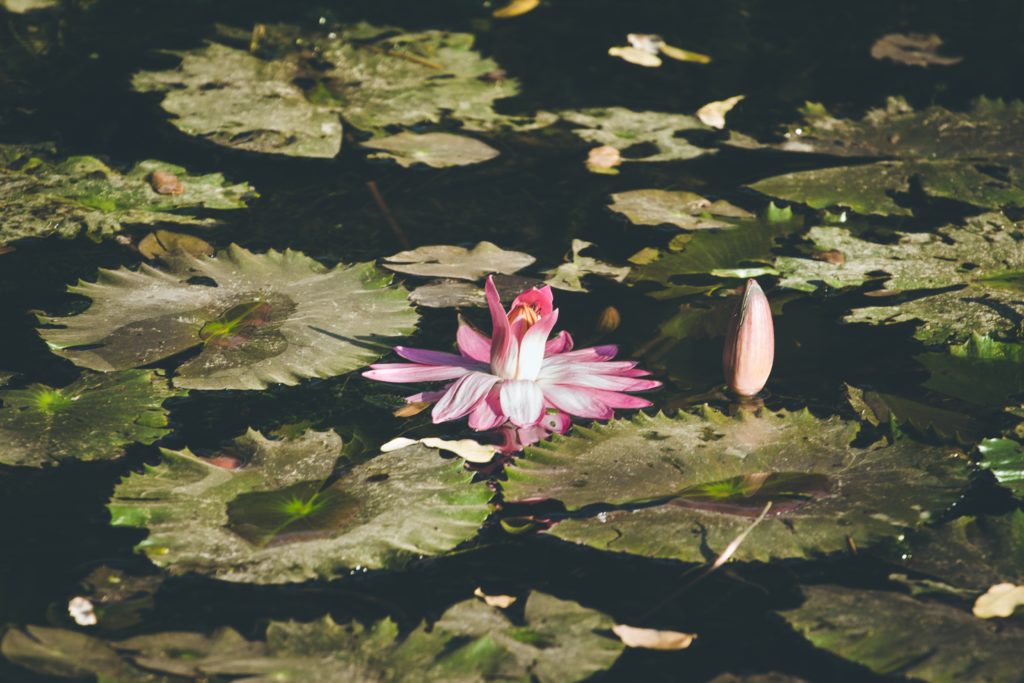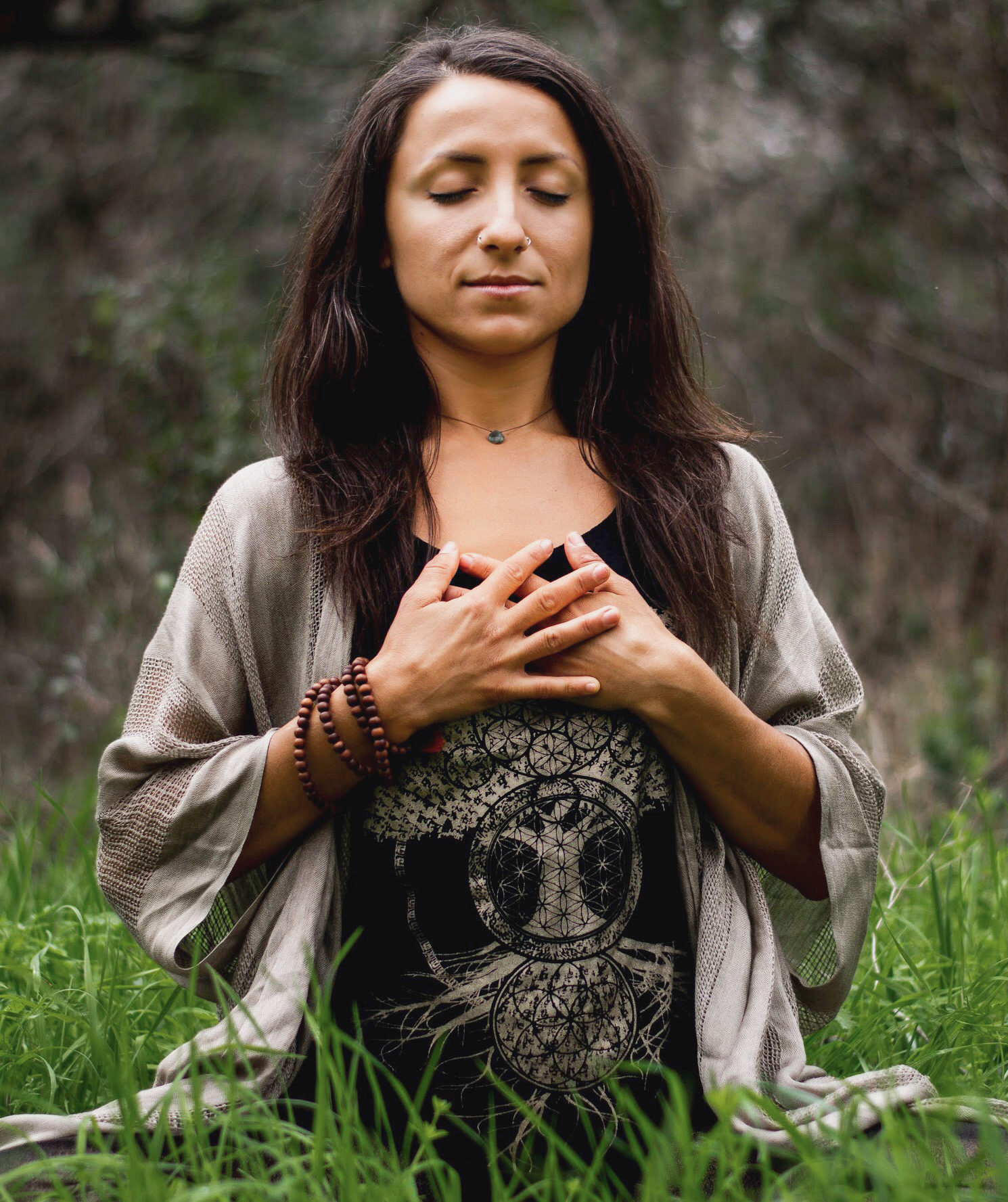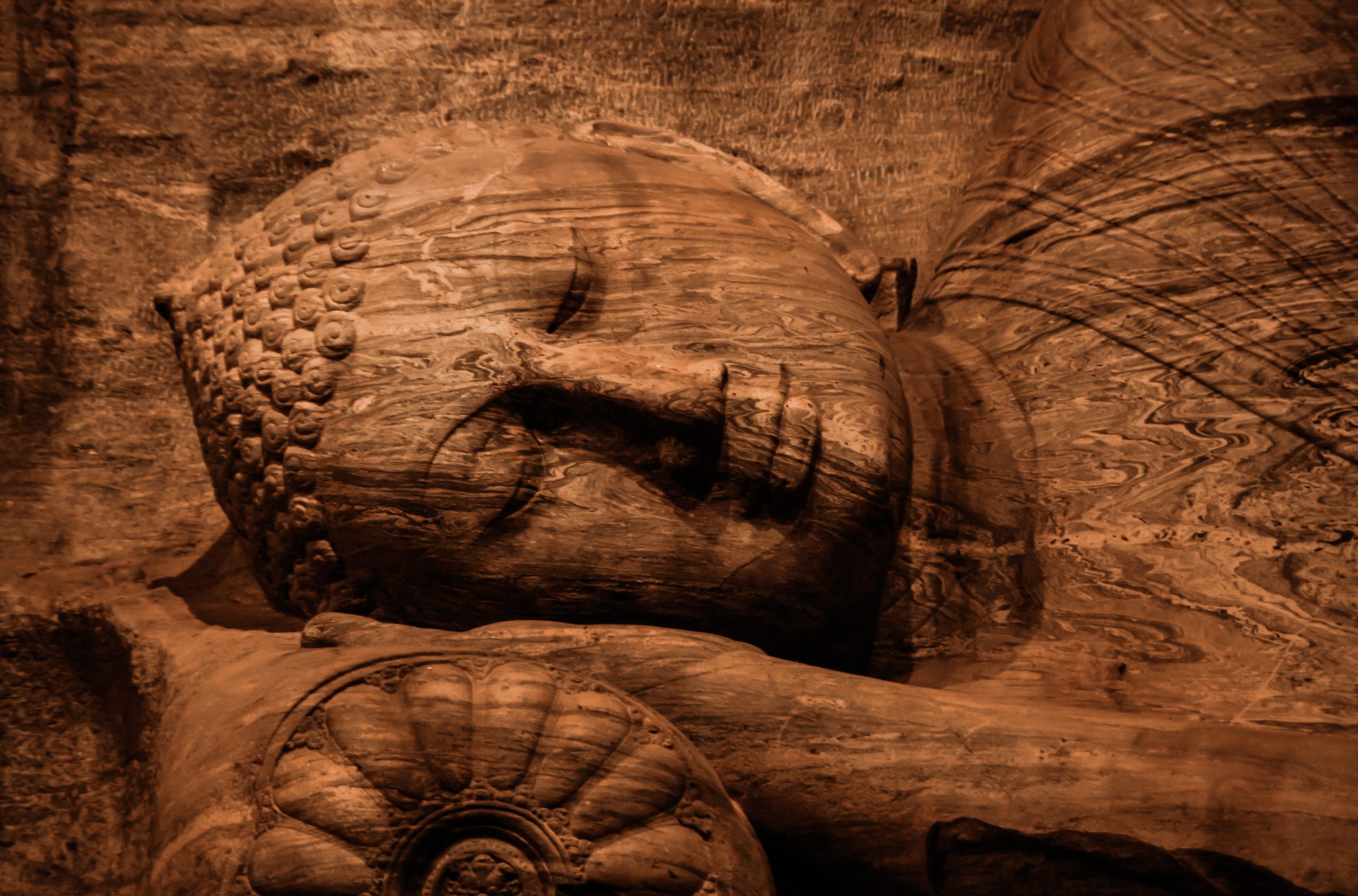
Creating a daily spiritual practice, a Sadhana
The original form of this article was published on Elephant Journal, and titled “10 Morning Rituals to help us access the Sweetness Within.”

How we spend any day is how we spend our lives. So why not practice to make every day a good one?
Sadhana is a term in Sanskrit (the original language of yoga) that is loosely interpreted as practice or effort. It is something that you do, initially, to step closer toward liberation or enlightenment. n our modern-day world, this can be referred to as a daily spiritual practice/routine/ritual that helps us become centered and grounded to lead a life of inner peace and happiness. In the world of yoga or overall personal development, this is also referred to as a daily or morning ritual.
Starting and establishing a daily practice dedicated to spiritual growth and personal development can be challenging for some of us and the process may not look linear. That said, it is perhaps the biggest step we can take to committing on the path toward a life well-lived with inner peace and happiness. Eventually, it turns from a thing we do to the way we live our life. It can start as a practice at a dedicated space such as an altar, and it continues within us as we go about the day. Various cultures around the world have different rituals as part of their spiritual practices. From my travels around the world, observing and learning from these rituals has contributed to my personal journey. They are often simply beautiful to observe and inspirational to witness the amount of devotion that is poured into them.



A daily practice can look many different ways. It is ultimately up to each individual to decide what works for them and what benefits them. Here are a couple ideas to consider that may help you get started or more deeply establish a daily spiritual practice:
Take a quiet moment to create a brief list of non-tangible things
that bring you happiness. This can be as simple as a positive word you
like using or a happy memory that brings a smile to your face.
Pick the top one on the list and utilize it as your motivator to get
you started with your spiritual practice. If it is a word, you can write
it on your mirror in the bathroom to look at while you brush your
teeth.
This friendly reminder can act as positive reinforcement so that it shifts the mindset from something you have to do to something you get to do, because, ultimately, it makes you feel good.
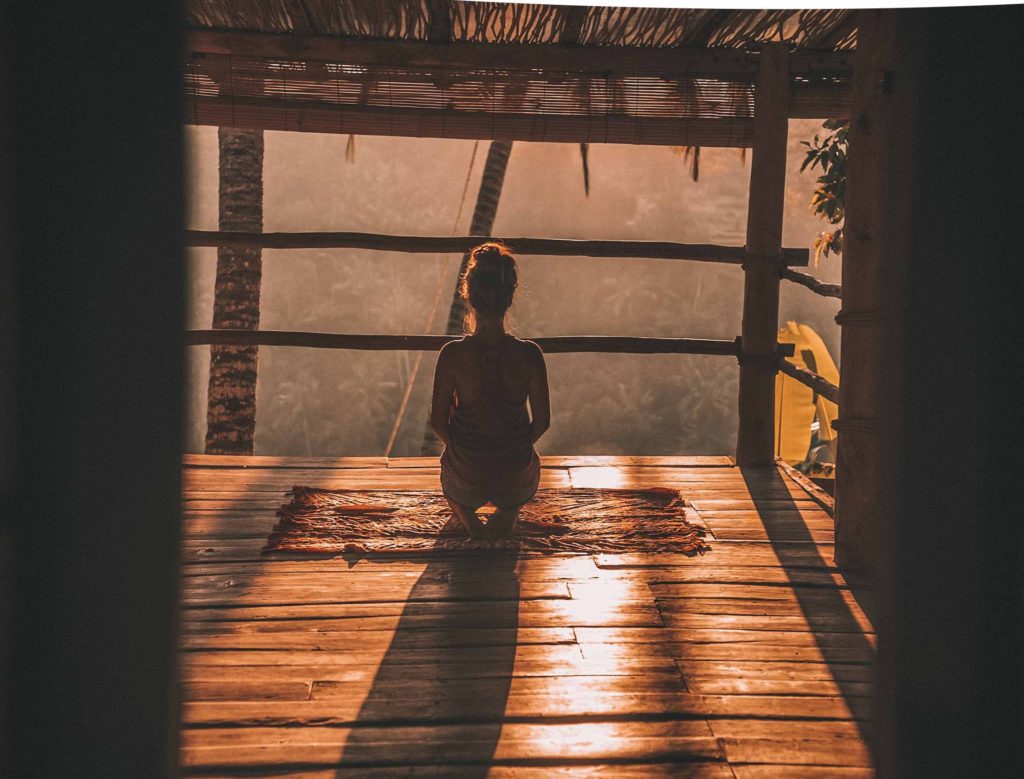
Dedicate a specific space for your spiritual practice. This can be a corner in your bedroom, a windowsill with space for a seat next to it, an area in your backyard, or whatever works for you where you can create a special dedicated place and be uninterrupted while in it. The looks of this space will depend on how your practice will take shape. There may be a yoga mat or a meditation cushion there, perhaps an inspiring or spiritual book, and a journal, candles, crystals, incense, a plant or some other access to nature, a clear view of the sky, a flower—the list goes on. It can be as simple or as elaborate as you choose it to be. I have found from my experience that once the habit of the practice has been created, the looks of the space do not matter as much. The experience itself is internal, so what matters most is that you find comfort in the space in order to go within.

Here are some elements you can include in your daily ritual. You can utilize any of them alone or combined:
- Gratitude practice – Ideally first thing when you wake up, think of or write down a few things in your life that you are grateful for. If there is a day when this does not come easy, consider feeling gratitude for the fact that you can breathe and are alive that day. That is a good start.
- Breathwork – This is also known as pranayama. There are many styles of breathwork out there, so find a type that works for you. Practicing breathwork can help you get grounded and present in your body, as well as calm the mind.
- Yoga, or another form of physical exercise – Consider a brief and gentle session just to awaken the body and move the energy around.
- Meditation – There are many styles of meditation out there, so find what works for you. For beginner stages, using a guided meditation can help. That said, it is best to keep any electronics away from this space and time of practice, or at least have them in airplane mode.
- Prayer/Mantra/Affirmation/Chanting – This can be part of meditation or an element of its own. Devotional singing, also known as kirtan, can be a deeply spiritual practice, and you don’t need a singing voice for it.
- Reading a passage from a spiritual text and contemplating on it. – The choice of the text will depend on your personal preference and overall life and worldview. I believe that regardless of spiritual orientation, most ancient spiritual texts teach similar values and lessons. One does not have to be Hindu to read and benefit from the Yoga Sutras or Bhagavad Gita, two great texts for yoga philosophy.
- Journaling – Consider a style of journaling that is focused on stream of consciousness or contemplative writing, rather than documenting your day, so the purpose of it is contained in sadhana.
- Using inspirational/oracle decks – This can be an easy and enjoyable way to start or close the practice. There are many types of decks out there, so you can simply pick one that draws you. Remember that any of the items proposed here are simply ideas and tools. Ultimately, you do not need any specific thing in order to go within yourself.
- Connecting with nature – There is a practice originating from Japan called shinrin-yoku, meaning forest-bathing, which can be deeply calming and even spiritual. To have a sample of this experience as part of your sadhana, consider keeping a plant or flower by your sacred space and touch its leaves. Alternatively, you can walk barefoot on grass or dirt, or look up at the sky for a while. This can be a calming experience and a good reminder of the beauty that is all around you.
- Any other rituals that call to you. Make the experience feel sacred and personalized. I like to light up a candle, burn incense, and use crystals, for example.
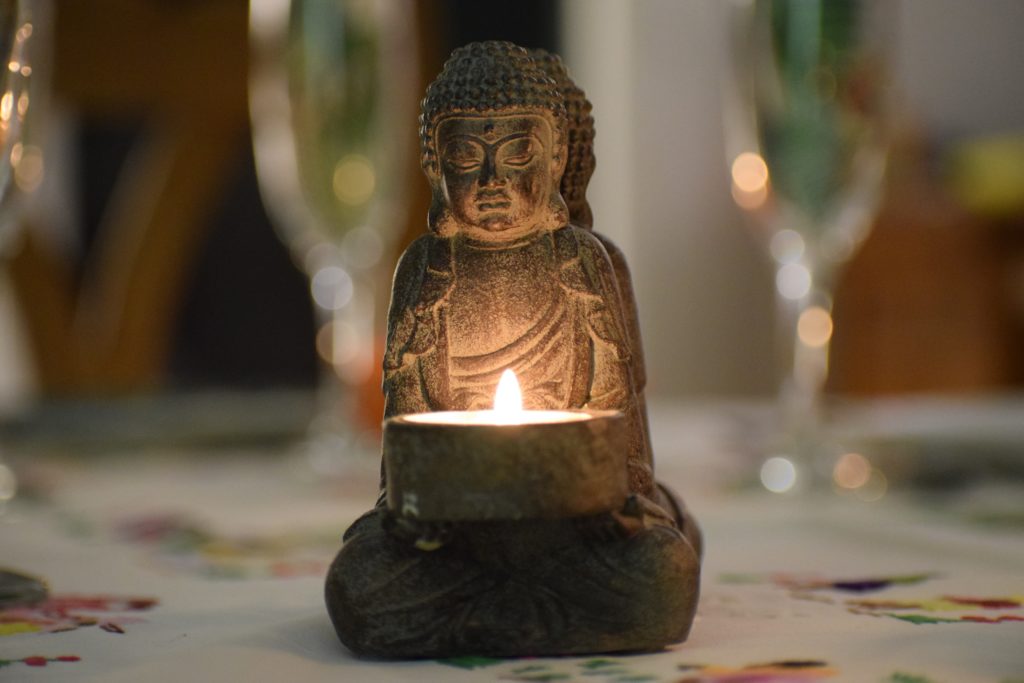
Once you identify your reminder-motivating factor and dedicate the space for your spiritual practice, the next thing to do, and the most important, is to just get started and do it regularly. Ideally, try to get to it daily, first thing in the morning, before getting to your phone, messages, or to-do list. This will help you reset yourself to homeostasis within and fill up your cup before attending to any other parts of life. Remember, this is a practice, so it may shift and change, and there may be days when you don’t get to it. And that’s okay. Also remember that, ultimately, sadhana is how you live your life. You can take the peace of your altar space with you and access it through the breath—anywhere, anytime. Learn to enjoy the process of remembering your truest you, that sweetness within you that has been there all along since the day you were born, and beyond. Deep down, sadhana is about reconnecting with your highest self and remembering that you are a soul having a human experience.
